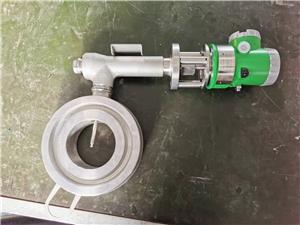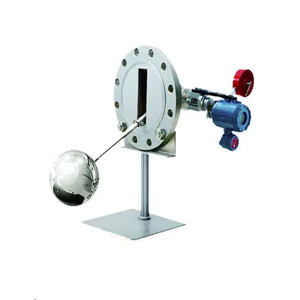UQD HART intelligent ball float level transmitter
UQD HART intelligent ball float level transmitter
UQD Ball Float Level Transmitter
Summary
UQD Ball Float Level Transmitter consists of measurement part and signal controller part. According to structural features, the measurement part can be divided into 90 type with small angle, 91type with big angle, 92 type with external float. The signal controller part can be divided into analog type (UQD.A) and intelligent type (UQD.Z).They are perfect instruments for liquid level measurement in production process in petroleum, chemical, metallurgy, power industry and so on.
Operation principle

The measuring unit of UQD ball float level transmitter includes floating ball, balance lever, balance weights, these three elements comprise a torque balance device. The floating ball can float up and down freely by level changing. When the level changes, the floating ball position changes correspondingly and drive the shaft to rotate through connecting rod of the floating ball. The angular displacement sensor in the controller couples with the shaft via a pair of gears. In this way, the changes of level can be converted into electric signal that will be turned into standard current signal in direct proportion by the electronic circuit in the case.
Main technical parameter
Performance and technical specification | Analog Type ( transmitter head) | Intelligent Type (transmitter head) | |
Supplying voltage | 24V DC | ||
Output signal | 4~20mA | 4~20mA+HART protocol | |
Accuracy class | 1.5% | 1.0% ; 1.5% | |
Local indication | Ammeter | LCD displayer | |
Setting methods | Local knob | Local keys; Debugging software + PC; Communicator | |
Damp time selection | Non | 0-32s | |
Local and remote configuration | Non | Yes | |
Alarm for exceeding range Diagnosis for failure | Non | Yes | |
Ambient temperature | -40~80℃ | -30~70℃ (for LCD) | |
Operating temperature | -30℃≤T<225℃(without radiator) 225℃≤T≤450℃(with radiator) | ||
Load resistance | See load chart | ||
Diameter of the floating ball | Φ230 mm | ||
Nominal pressure | ≤6.3MPa | ||
Nominal diameter | DN250 | ||
Flange standard | HG/T20592-2009, HG/T20615-2009 or on request | ||
Wetted material | Flange: carbon steel, 304 or on request; Others should be higher than 304 or on request. | ||
Fluid density | ≥0.55g/cm3 | ||
Power supply inlet | M20*1.5 (female thread) or on request | ||
Protection class | IP67 | ||
Explosion-proof | See the explosion-proof type chart | ||
Explosion-proof type chart
Model | UQD.A | UQD.Z | ||
Explosion type | Exia | Exd | Exia | Exd |
Explosion mark | Exia ⅡCT5 | ExdⅡCT1~T6 | ExiaⅡCT1~T6 | ExdⅡCT1~T6 |
Model selection table
Model | Code | Code meaning | |||||||
UQD |
| Ball float level transmitter | |||||||
| A |
| Analog type | ||||||
Z |
| Intelligent type | |||||||
| - |
| Small angle type | ||||||
| 90 |
| Small angle type | ||||||
91 |
| Big angle type | |||||||
92 |
| External float type | |||||||
| A |
| Flange:DN250, PN≤2.5MPa, PN2.0MPa (class 150) | ||||||
B |
| Flange: DN250, PN4.0MPa | |||||||
| C |
| Flange: DN250, PN6.3MPa, PN5.0MPa (class 300) | ||||||
| / |
| Intrinsically safe | ||||||
| i |
| Intrinsically safe | ||||||
d |
| Explosion isolation | |||||||
| T |
| Flange material: Carbon steel | ||||||
H |
| Flange material: 304(others as actual fill in) | |||||||
| D | Medium temperature: -30℃≤T≤+225℃(without radiator) | |||||||
G | Medium temperature: +225℃<T≤+450℃ (with radiator) | ||||||||
UQD. □ - □ □ / □ □ □ | /Range (unit is mm) | ||||||||
Example:
UQD.A – 90B/iTG: ordinary type electric ball float level transmitter, analog type, nominal diameter is 250, nominal pressure is 4.0MPa, intrinsically safe, flange material is carbon steel, medium temperature is +225℃<T≤+450℃, with radiator.
UQD Ball Float Level Transmitter
Outline and installation dimensions
1. The structure and size
1.1 UQD90 ordinary type ball float level transmitter
They have simple structure with easy and convenient installation. They are suitable for working environment (or container) in which the rod is needed to be long and the range is small. The angular rotating range (angular home range ) ≤35。.
(When operating angle range is ≥8。, signal 4-20mA can be output.)




